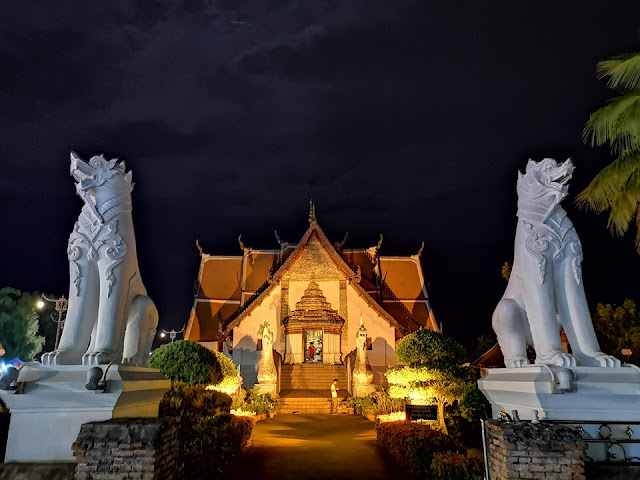Nan Province THAILAND
น่านเนิบเนิบ...ปัว บ่อเกลือ สันติสุข
To see the Rock Salt.
"ออกเดินทาง" ไปในที่ที่เคยไป อาจดูน่าเบื่อสำหรับใครบางคน แต่ทุกครั้งที่ได้ไปกลับมีอะไรแปลกใหม่ให้พบเจอเสมอ "ธรรมชาติ" สุขสงบชุ่มฉ่ำใจเสมอเมื่อได้สัมผัส "วิถีชีวิต" มีสีสันสร้างแรงบันดาลใจให้เราเสมอ เพียงเรามองไปตามเส้นทางนั้นๆ
Rock Salt @ Bo Kluea
อำเภอบ่อเกลือเดิมเรียกว่า เมืองบ่อ ซึ่งคงจะหมายถึงบ่อน้ำเกลือสินเธาว์ที่มีอยู่ในพื้นที่ซึ่งเดิมมีอยู่จำนวน 9 บ่อ เมืองบ่อเดิมทีเป็นชุมชนขนาดใหญ่ มีความสำคัญมาตั้งแต่ในอดีตกาล ปรากฏหลักฐานทางประวัติศาสตร์ตามพงศาวดารเมืองน่านซึ่งพระเจ้าสุริยพงษผริตเดชได้แต่งรวบรวมขึ้นไว้ มีข้อความกล่าวถึงแหล่งผลิตเกลือที่สำคัญที่เป็นสาเหตุให้พระเจ้าติโลกราชแห่งเมืองเชียงใหม่ยกทัพมายึดเมืองน่าน เมื่อปี พ.ศ. 1993 ว่า
"เดิมทีเขตอำเภอบ่อเกลือเป็นป่าดงพงไพร ไม่มีผู้คนอาศัยอยู่ มีหนองน้ำ ซึ่งพวกสัตว์ต่าง ๆ ชอบมากินน้ำในหนองน้ำแห่งนี้เป็นประจำ และยังมีนายพรานผู้หนึ่งมาล่าสัตว์ และเห็นพวกเหล่าสัตว์ทั้งหลายมักจะกินน้ำที่นี่เป็นประจำ เมื่อลองชิมดูจึงรู้ว่ามีรสเค็ม ข่าวได้ล่วงรู้ไปถึงเจ้าหลวงภูคาและเจ้าหลวงบ่อ จึงได้มาดูบ่อน้ำเกลือ และต่างก็ต้องการครอบครอง จึงคิดหาวิธีการโดยทั้งสองพระองค์ขึ้นไปอยู่ที่ยอดดอยภูจั๋น เพื่อแข่งขันกันพุ่งสะเน้า (หอก) แสดงการครอบครองบ่อน้ำเกลือ เจ้าหลวงภูคาพุ่งหอกไปตกทางตะวันตกของลำน้ำมาง ตรงที่ตั้งหอนอกในปัจจุบัน เจ้าหลวงบ่อพุ่งหอกไปตกทางตะวันออกของลำน้ำมาง ตรงที่ตั้งหอเจ้าพ่อบ่อหลวงในปัจจุบัน ผู้คนที่พากันมาดูการแข่งขันพุ่งหอก ได้นำเอาก้อนหินมาก่อไว้เป็นที่สังเกต แล้วตั้งเป็นโรงหอทำพิธีระลึกตอบแทนเจ้าหลวงทั้งสององค์ทุกปี ภายหลังทั้งสองพระองค์คิดกันว่า จะนำคนที่ไหนมาอยู่ เมื่อปรึกษากันแล้ว เจ้าหลวงภูคาจึงไปทูลขอประชาชนที่อยู่เมืองเชียงแสนจากเจ้าเมืองเชียงรายมาหักร้างถางพงทำเกลืออยู่ที่นี่ ซึ่งเป็นบรรพบุรุษของชาวบ่อหลวงในปัจจุบันนั่นเอง ดังนั้นชุมชนบริเวณนี้จึงได้เกิดขึ้นและดำรงอยู่มาจนถึงปัจจุบันนี้ (ผู้เฒ่าผู้แก่เล่าว่า เดิมทีนั้นบรรพบุรุษอยู่ที่ประเทศมองโกเลียและประเทศจีน หนี้ลี้ภัยมาทางแม่น้ำเหลืองเข้าสู่ประเทศลาว ทางประเทศลาวไม่อนุญาตให้อาศัยอยู่ได้ จึงพากันข้ามแม่น้ำโขงมาอาศัยอยู่ที่เมืองเชียงแสน)"
ต่อมาเมื่อการปกครองของรัฐ เมืองบ่อจึงได้อยู่ในเขตการปกครองของอำเภอปัว โดยแยกเป็น 2 ตำบล คือตำบลบ่อเกลือเหนือและตำบลบ่อเกลือใต้ ซึ่งในระยะหลังมีราษฎรจากพื้นราบมาทำการค้าขายและตั้งรกรากอยู่เป็นจำนวนมากประกอบกับราษฎรในพื้นที่ห่างไกล จึงได้มีประกาศกระทรวงมหาดไทยแบ่งเขตการปกครองท้องที่อำเภอปัว จังหวัดน่าน โดยแยกตำบลบ่อเกลือเหนือและตำบลบ่อเกลือใต้เป็น กิ่งอำเภอบ่อเกลือ ตั้งแต่วันที่ 15 กุมภาพันธ์ พ.ศ. 2531และได้รับการยกฐานะเป็น อำเภอบ่อเกลือ เมื่อวันที่ 7 กันยายน พ.ศ. 2538
Sin Thao or Rock Salt Pits
Contact us online
Address:Bo Kluea Tai, Bo Klue, Nan 55220 Thailand
Tel:+661672, +665452 1127, +665452 1118/9
Service day:Everyday, Service hours: 08:00-17:00
Sin Thao or Rock Salt Pits has been an important salt production venue from ancient times. In ancient times, salt was used to barter with other things that the community could not produce by themselves. The exchange was conducted with the caravan of the Haw People from Yunnan, Guangxi and other provinces in China, as well as the Thai Khoen sellers from Keng Tung and the Thai Lue cow traders from Tha Wang Pha district. Salt was treated as an important commodity and a significant military factor, and as such, the past rulers in the northern administrative circle got a part from the salt levy and became the reason for Phraya Tilokkarat and his Chiang Mai troops to invade Nan. There are two important salt production venues in Nan: the Wa River watershed area, consisting of two large pits, and the Nan River watershed area, where there are five large pits and many tiny ones. Currently, the locals still produce salt using the traditional method of transporting saline by bamboo sticks to the storage ponds.
Wat Phumin Nan Map
The Wat Phumin is the most attractive temple in the town of Nan, thanks to its unique architecture and its colorful 19th century murals that show scenes of daily Nan life. The Lanna and Thai Lü style temple was founded in 1596. It was rebuilt from 1867 until 1875, when the viharn/ubosot got its present shape.
The temple complex consists of a combined viharn/ubosot with an unusual cruciform floor plan, a two storey Ho Trai library building and a dome like structure that contains a diorama with scenes from Buddhist hell that leave little to imagination.
Thai Lü style combined viharn and ubosot
The Wat Phumin’s main building serves as both a viharn and ubosot. The Thai Lü style structure has an unusual cruciform floor plan, with an entrance on each of its sides. All four entrances protrude slightly out from the building and are topped with a multi tiered, heavily decorated structure in the shape of a mondop’s roof.
The symmetrical building contains small windows, which is typical for the Thai Lü style. The wooden doors contain several carved motifs including Lanna floral motifs, while the gables are decorated with golden motifs.
The viharn’s three tiered roof is ornamented with Naga finials on the roofs ends; at the center of the roof is a multi tiered spiral ornamental umbrella. Long balustrades lead to the North and South entrance. Large Naga heads are placed at the front, the body of the mythological serpent extending over the balustrades towards the entrance. The stairs to the East and West entrances are much shorter and are guarded by two white lions.
Large pillars inside the viharn support the roof. The black and red lacquer pillars contain gold stencilled flower and elephant motifs. In the center of the structure are four seated Buddha images, sitting back to back, each facing one of the entrances. The images, seated on a high pedestal and surrounded by four intricately decorated teak pillars are in the Bhumisparsha mudra, “Calling the Earth to Witness”. In one of the corners is a Dhamma seat or thammdat, a seat used by monks when teaching from the Buddhist scriptures.
19th century mural paintings
The Wat Phumin is famous for its beautiful and colorful 19th century mural paintings, that cover much of its interior walls. While some of the murals have largely vanished, some of them are in an excellent condition. The murals show scenes of daily life in the 19th century as well as depictions of the previous lives of the Buddha.
Depictions of 19th century daily life show a city and its docks, sailing ships and a steamship, a horse drawn chariot, people smoking and playing musical instruments, Europeans in a boat and several animals like birds and elephants. The most famous depiction is that of a couple, the man with tattoos on arms and chest whispering in the woman’s ear.
Thank you : A . Lek Wara ID





































No comments:
Post a Comment